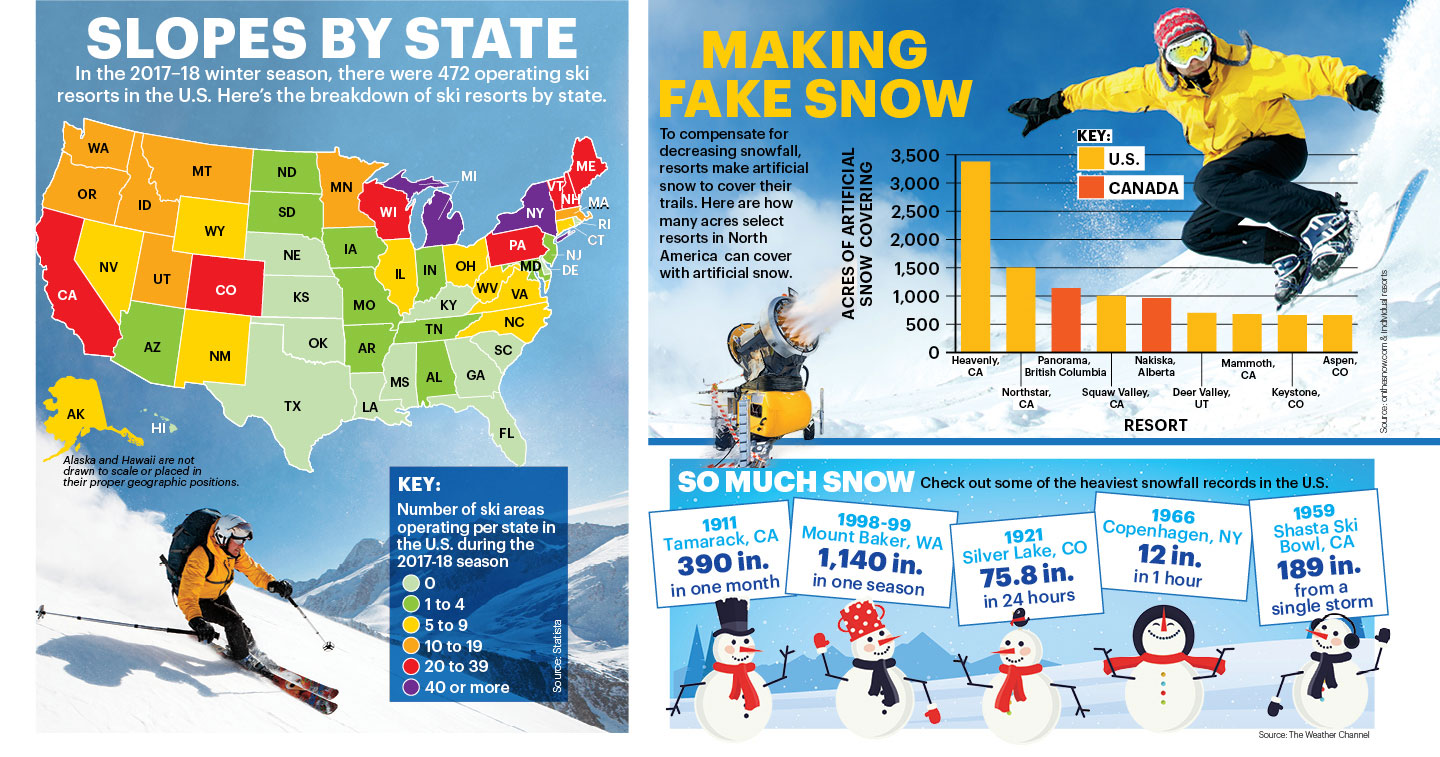Winter is here, but don’t break out your skis or snowboards just yet. The volume of snow that falls and sticks to the ground in North America has declined by up to 30 percent over the past century. The season known for snow-filled days is becoming milder. And now, weather conditions aren’t optimal for winter sports.
“Warming temperatures are to blame,” says Joel Gratz. He’s a meteorologist at Open Snow, a company that forecasts snow conditions in different areas. The soft, fluffy, freshly fallen powder that skiers dream of is less likely to blanket mountaintops. That’s because snow is melting more quickly or falling as rain instead.
With snow in short supply, ski resorts are turning to snow machines to do the job of Mother Nature. These machines spray out cold water and air to create tiny balls of ice that fall like regular snow.
Snowmaking helps if there is a lack of natural snow, but the process is expensive and gobbles up energy. Ski resorts already use a huge amount of electricity to operate lifts, lights, and buildings. Making artificial snow means using even more. Since most energy produced in the U.S. comes from burning fossil fuels, making snow produces even more carbon emissions. This adds to the greenhouse gases that contribute to global warming.
One way people can help slow climate change is by reducing the amount of fossil fuels we burn. “If the steps we take to reduce carbon emissions lead to lower temperatures, skiers would be happy too,” says Gratz.


